Attendance rate - The how to guide with benchmarks
Webinar attendance rate is the ratio of registrants to webinar attendees. Typically, this KPI can be expected to be between 40 - 60 %.
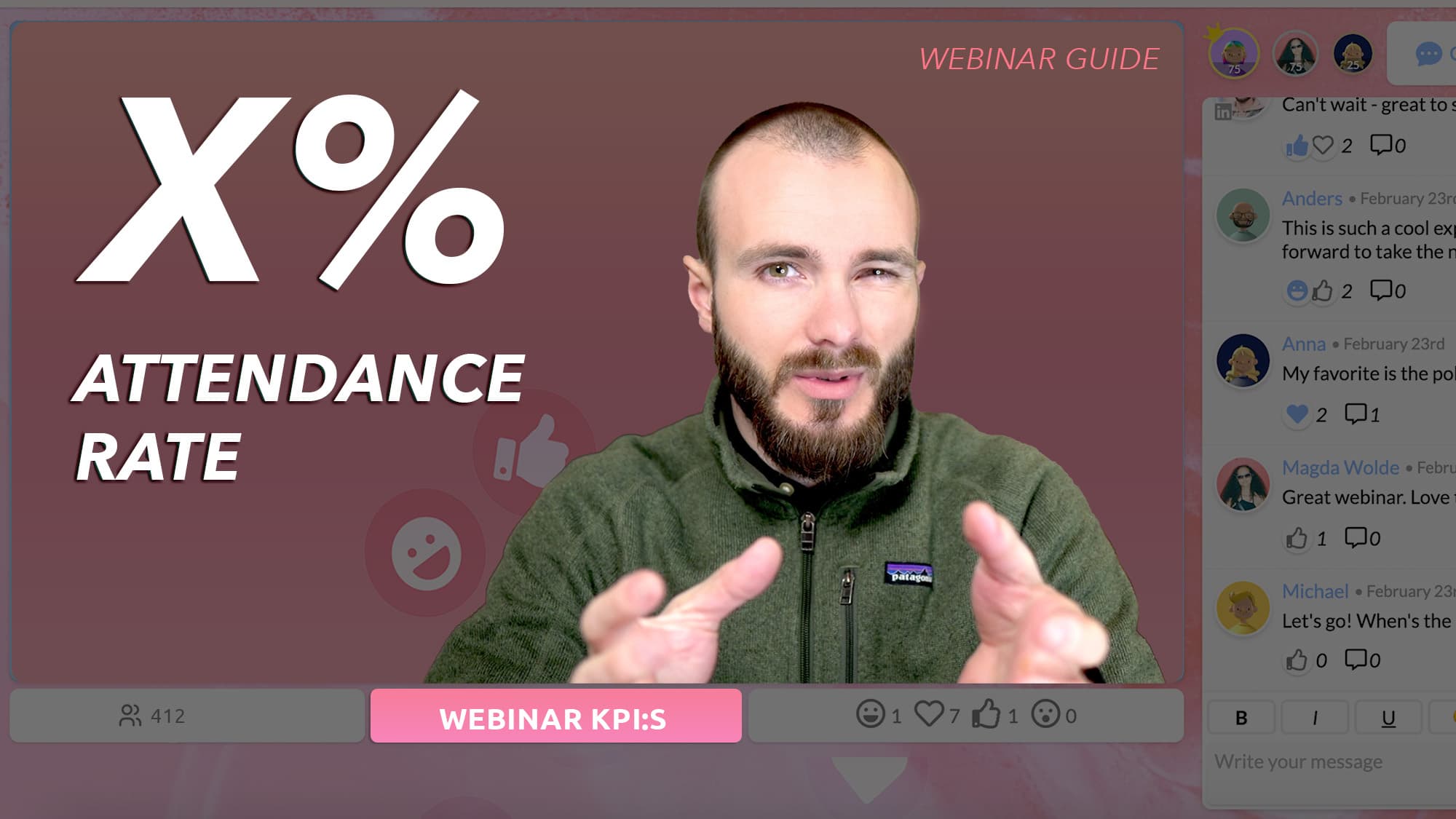
Contents
What is webinar attendance rate?
The webinar attendance rate is a KPI that refers to the ratio of registrants to webinar attendees. Meaning the number of people who sign up to a webinar that actually make it to watch the webinar live, or on-demand.

Typically, you can expect this to be between 40 - 60 %. There are different benchmarks for different industries and types of webinars, and this figure can also be heavily affected by how the registrants were acquired.
What does the attendance rate tell us?
A higher attendance rate typically indicates a successful webinar, while a lower rate may suggest a need to improve various aspects, such as promotion, number of reminders, content, or scheduling.
In Univid's webinar platform you have three reminders by default, which typically improves attendance rate substantially.
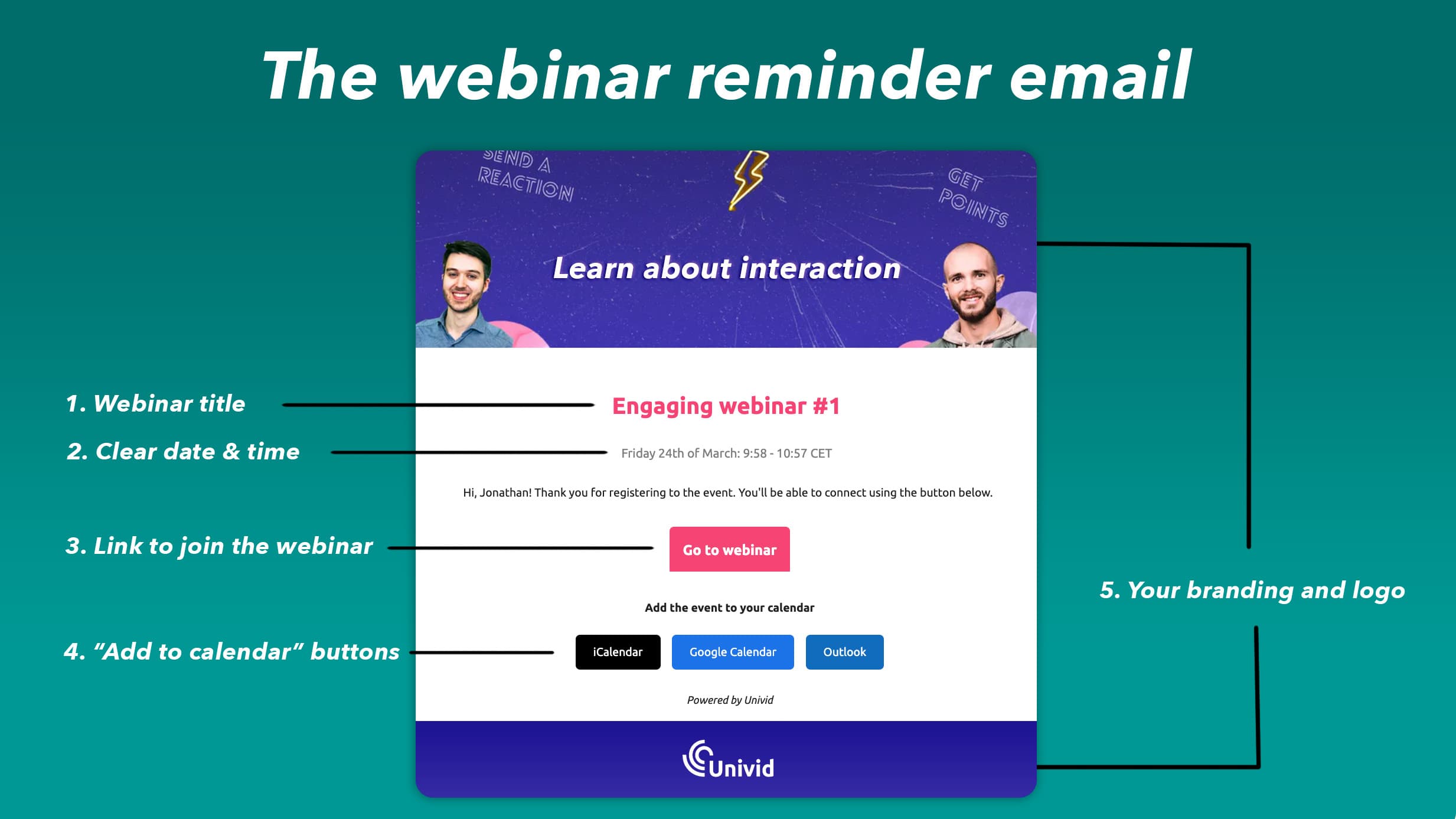
Also, there are simple buttons where the registrants can add the event to the calendar so they won't miss out.
How to calculate the webinar attendance rate?
To calculate the attendance rate, divide the number of attendees by the total number of registrants and multiply by 100 to get the percentage.
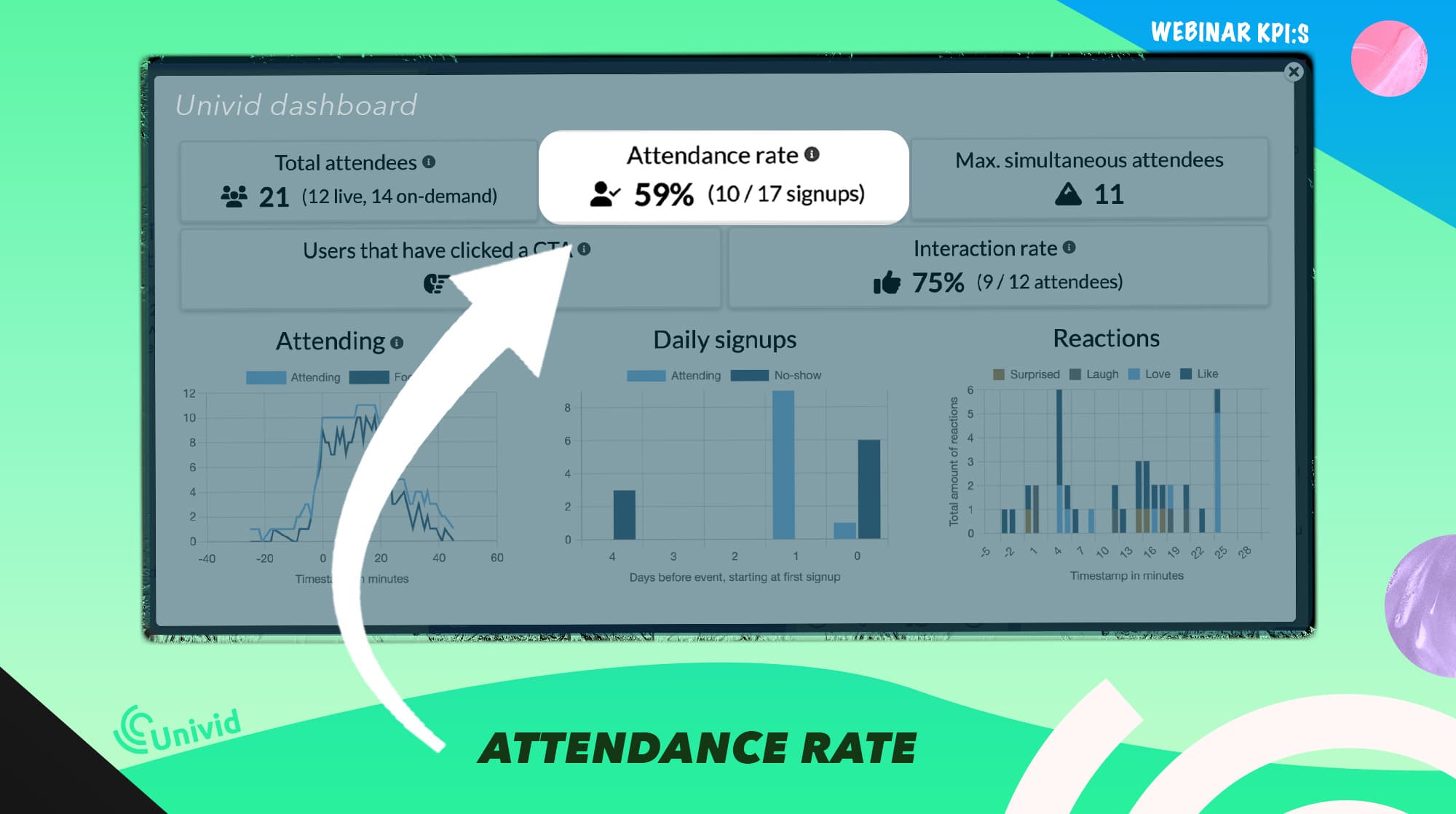
What is the average webinar registration rate 2025?
Webinar attendance rates varies across industries - but can typically be expected to be around 35-60%. Keep in mind - each industry has it's own benchmarks, and a variety of factors impacts registrations you can expect - for example whether the webinar is internal or external facing, what type of webinar it is, and what webinar software you use.
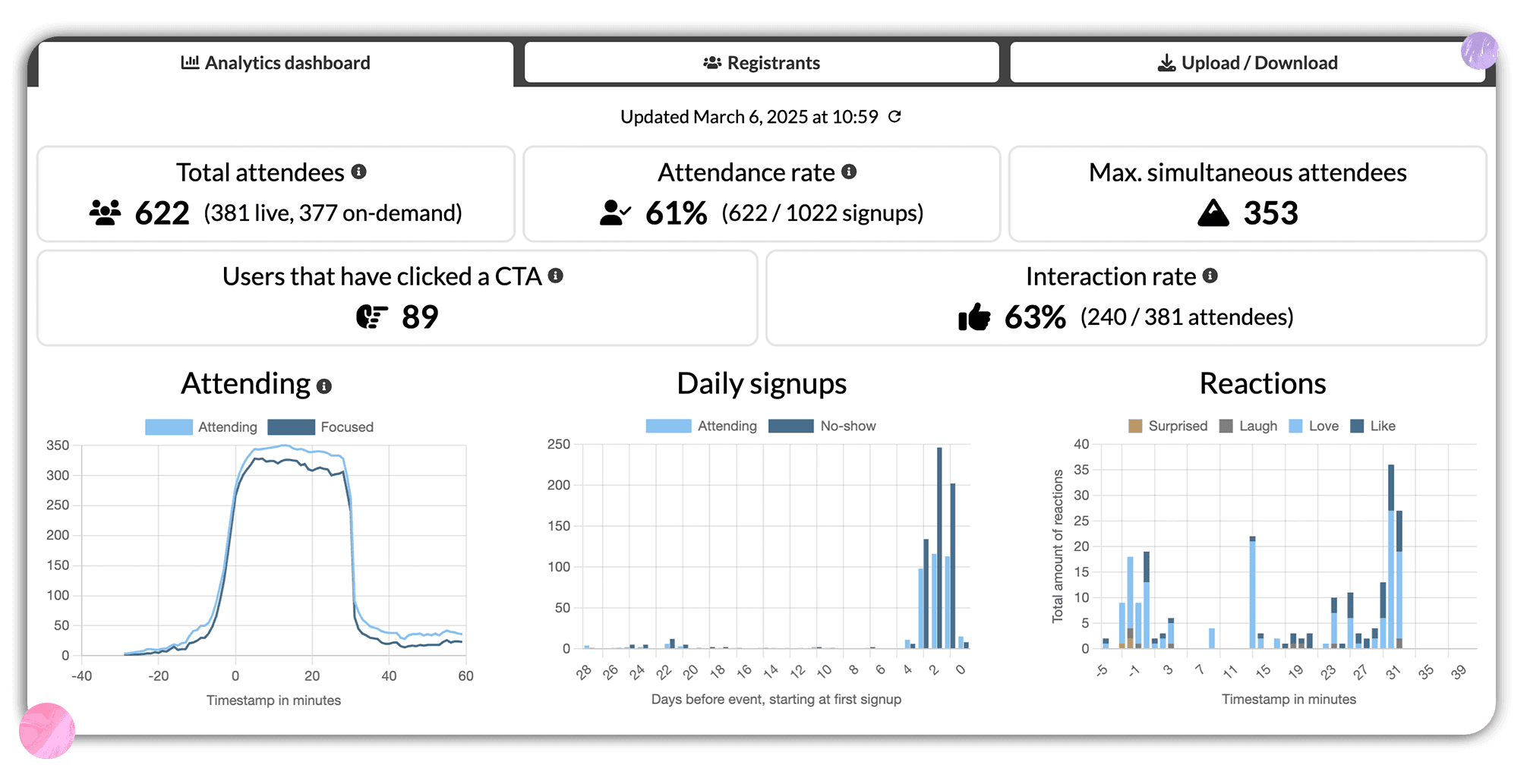
What is a good webinar attendance rate?
Webinar attendance rates vary highly depending on industry, topic, and type of webinar. External marketing webinars typically see the lowest attendance rates of around 35-45%, and internal communications webinars have the highest attendance rates of around 55-60%.
Maybe not surprising facts - as a potential lead is not as committed to attending, compared to an internal employee.
Let's break down what an OK, good, and great webinar attendance rate looks like if you are hosting a webinar for external purposes.
Attendance rate | Rating |
|---|---|
< 35 % | Needs work |
35-40% | OK |
45-55% | Good |
55-65% | Great |
> 65% | Outstanding |
Attendance rate vs. rating - What's an OK, good and great attendance rate for external webinars?
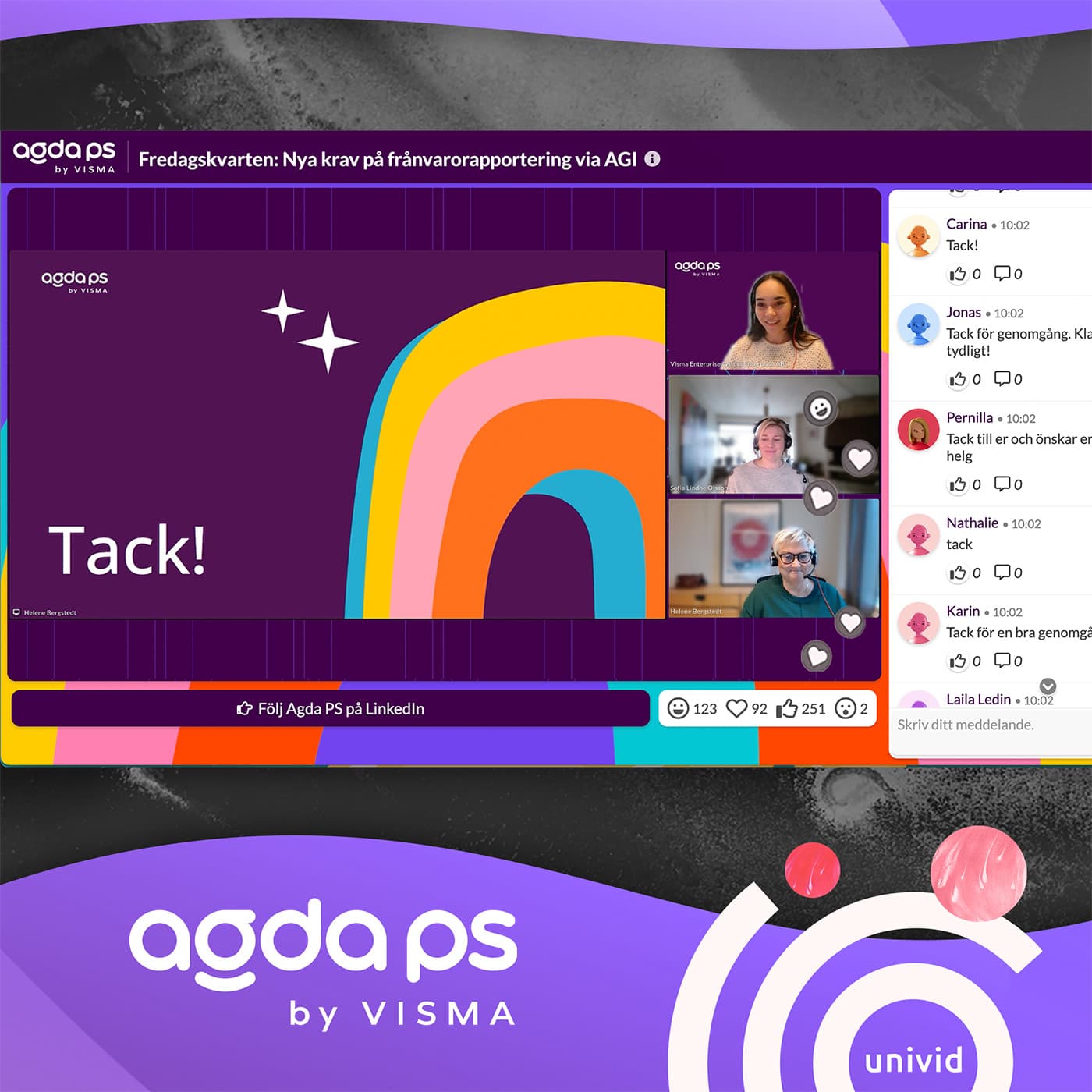
For example, Visma company Agda PS had around 86% attendance rate for their webinars towards existing customers.

Why do you have a low webinar attendance rate?
You've prepared your webinar, filled with valuable insights and engaging content, yet the turnout did not meet your expectations. You're not alone in this struggle. A lot of marketers face this frustration when launching webinar campaigns
Low attendance isn’t necessarily equal to a failure in your webinar's value proposition. It could be a symptom of too little promotion, inaccurate targeting, your webinar tool, or simply comparing against the wrong benchmark.
Now, focus your energy into understanding the root cause. Analyze your promotion strategies, evaluate your target audience, and identify areas for improvement. More specifically, there are 6 factors that can determine your attendance rate.
What factors affect webinar attendance rate
Some commons factors that affect the webinar rate are the following:
Webinar format: are you hosting live, automated, or on-demand? Live tend to have the highest attendance rates as it feels exclusive and you don't want to miss out.
Topic and content: it might be an obvious one - but your offer to your viewers of course determines the likelihood they will show.
Type of webinar: Targeting an external or internal audience? Marketing webinars for external leads tend to have lower average attendance rates, whereas internal communications webinars have higher rates.
Industry: Attendance rates varies depending on industry. For example, financial services and SaaS typically see slightly higher rates - where Consulting tend to see lower averages.
Webinar software: If you have a webinar tool like Univid, that automatically send several branded reminders with "add to calendar button", you can significantly increase your webinar attendance rates.
Day of the week: Some days are simply better than others to host your webinars. The middle of the week generally see higher average attendance rates. See our section below for finding the perfect day and time.
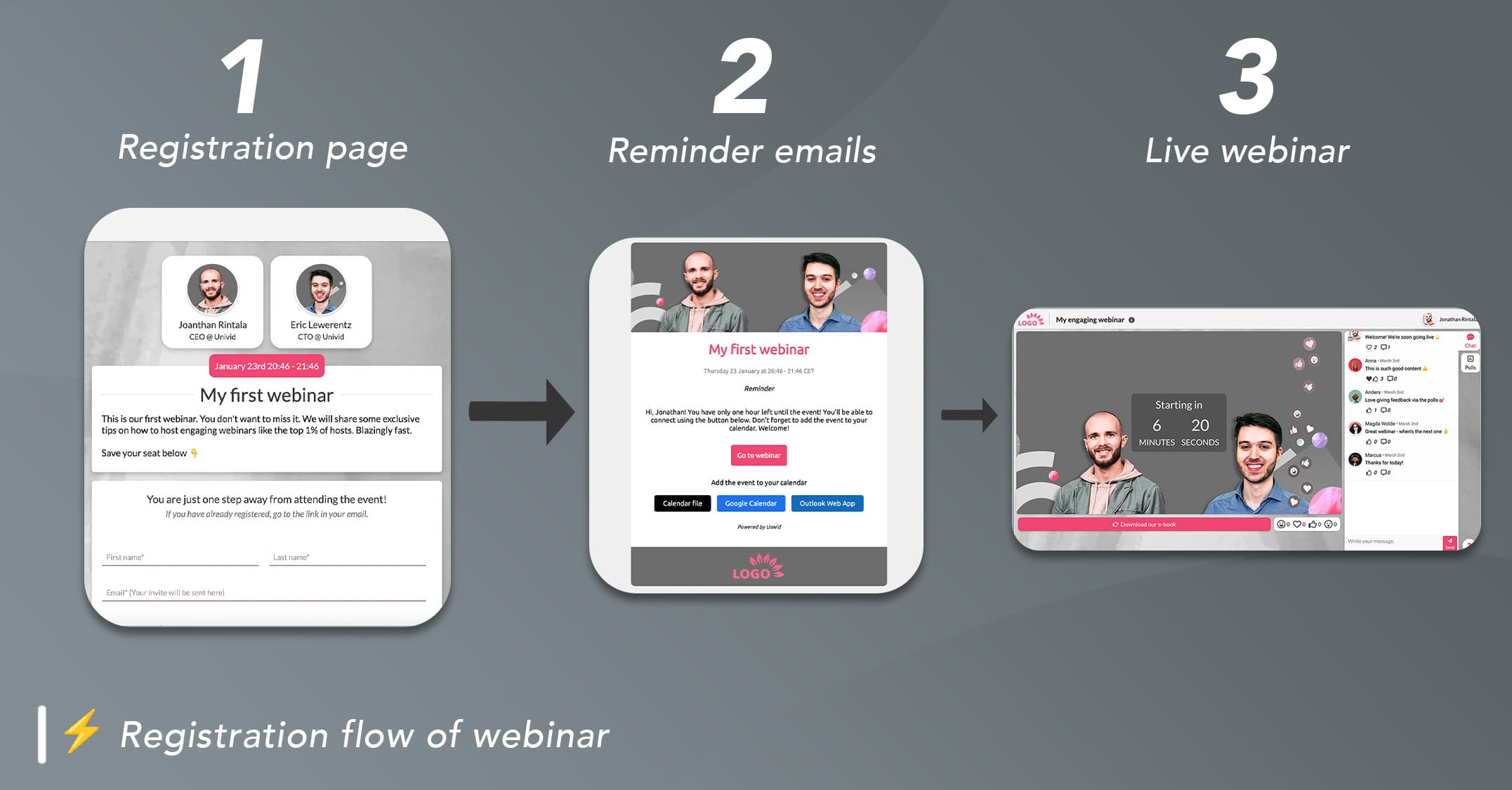
How to increase webinar attendance?
But how do you turn your goal into reality? The answer lies in proactive and strategic planning. Start in advance. Promote your webinar across multiple channels; social media, email marketing, and partnerships. Write copy that resonate with your target audience's pain points and aspirations.
4 ways to increase webinar attendance
1. Make your Ideal Viewer Persona feel FOMO
People will attend when they simply can't afford to miss out on your webinar.
Everyone else will be there, maybe their competitors, and get the latest insights that can change the way they run lead generation, automate their expenses, run upskilling - or whatever subject you talk about or problem you are solving.
2. Start promoting organically
Spread the word about your webinar and its topic. Use the power of different social media channels, email marketing, and word-of-mouth referrals. Create teaser content to awake curiosity and build anticipation.
Short teaser videos on LinkedIn shared organically by speakers or employees of the hosting company have been super effective in driving organic signups.
3. Boost organic top performers with paid
Leverage the precision targeting possibilities of platforms like Meta, LinkedIn, and Google Ads to reach your ideal audience segments.
Shape your message to resonate with their needs and pain points. Make them feel seen, heard, and understood.
An effective strategy here is to boost your top performing organic posts and content around the webinar with paid ads - targeting specifically your ideal viewer persona. Then it will feel much more genuine when it pops up in the feed and already have a bunch of comments, likes and engagement from people just like you.
4. Don't underestimate the webinar flywheel
A webinar is not a one-way conversation. Encourage active attendee participation through polls, Q&A sessions, and interactive elements. This will create a sense of community among your attendees, making them feel like contributors to the webinar.
But how does this affect attendence rate?!
Well, this will create strong word-of-mouth where attendees tell others about your webinars, which can be a huge growth lever over time. Not for your first webinar, but for all of the upcoming ones. Another reason why webinar series are so popular.
This is something we have seen countless times, with top 1% webinar hosts leveraging primarily existing webinars and focus on providing a great experience with engagement that people want to come back for and tell others about.
The surprising impact of time scheduled on webinar attendance rate
While you might expect factors like content and promotion to play a significant role in webinar attendance rates - a less obvious but crucial aspect is the time and day when you decide to schedule your webinar. It's also one you can actually impact, just like what webinar software you choose, or the webinar format you decide on. Factors like industry, and type of webinar are more difficult to change.
To get the most attendees, think about when your audience is likely to be available and interested. Some days and times are better than others for different groups.
The best times to host B2B webinars for high attendance rates
Weekdays might work better for B2B webinars. In business-related webinars, your attendees can generally be expected to take time out of their ordinary workday to join in. Just make sure to not schedule it when all your attendees are on their daily standups, or in meetings.
For example, Monday mornings are not recommended. And some industries, like Venture Capital firms - often have their general meeting large parts of Mondays. So if you're targeting VC:s to join your webinar - choose a different day.
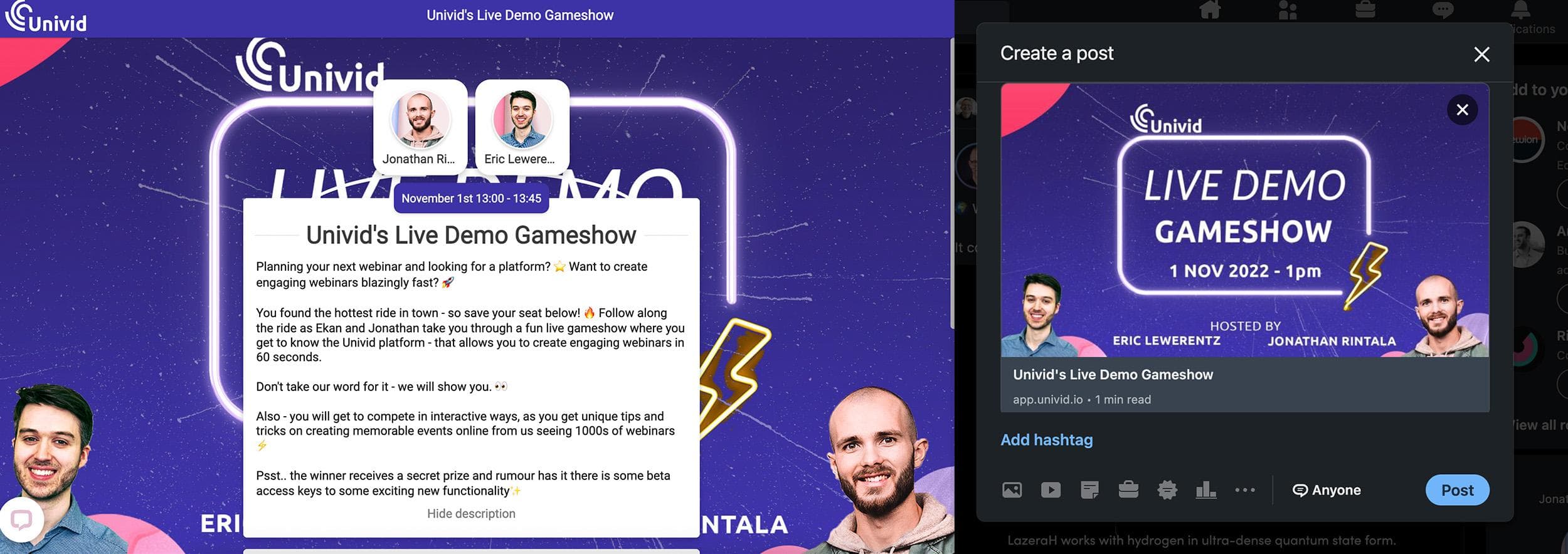
Around lunch time is generally good - but it depends on your target audience, and when they generally have some spare time to attend.
Some hosts really like hosting breakfast webinars for their audiences at around 7:30AM or 8:30AM. Others swear by lunch webinars. If you want high attendance rate according to studies - 11AM and 2PM are popular choices - and you don't interfere with either the lunch hour, or risk loosing out on the people sleeping in a bit later. Evening webinars also occur, but are not as popular.
👉 Check out the webinar scheduler - to find the best time to host your webinar according to research.
Consumer oriented webinars
Weekends can be ideal for casual or hobby-related topics. Also, consider the time of day - early mornings or evenings might be more convenient for people who work during the day.
By carefully choosing the right time and day for your webinar, you can increase attendance and create a better experience for your audience.
Coordinating a webinar across time zones
In addition, coordinating a webinar across multiple time zones can be quite a challenge.
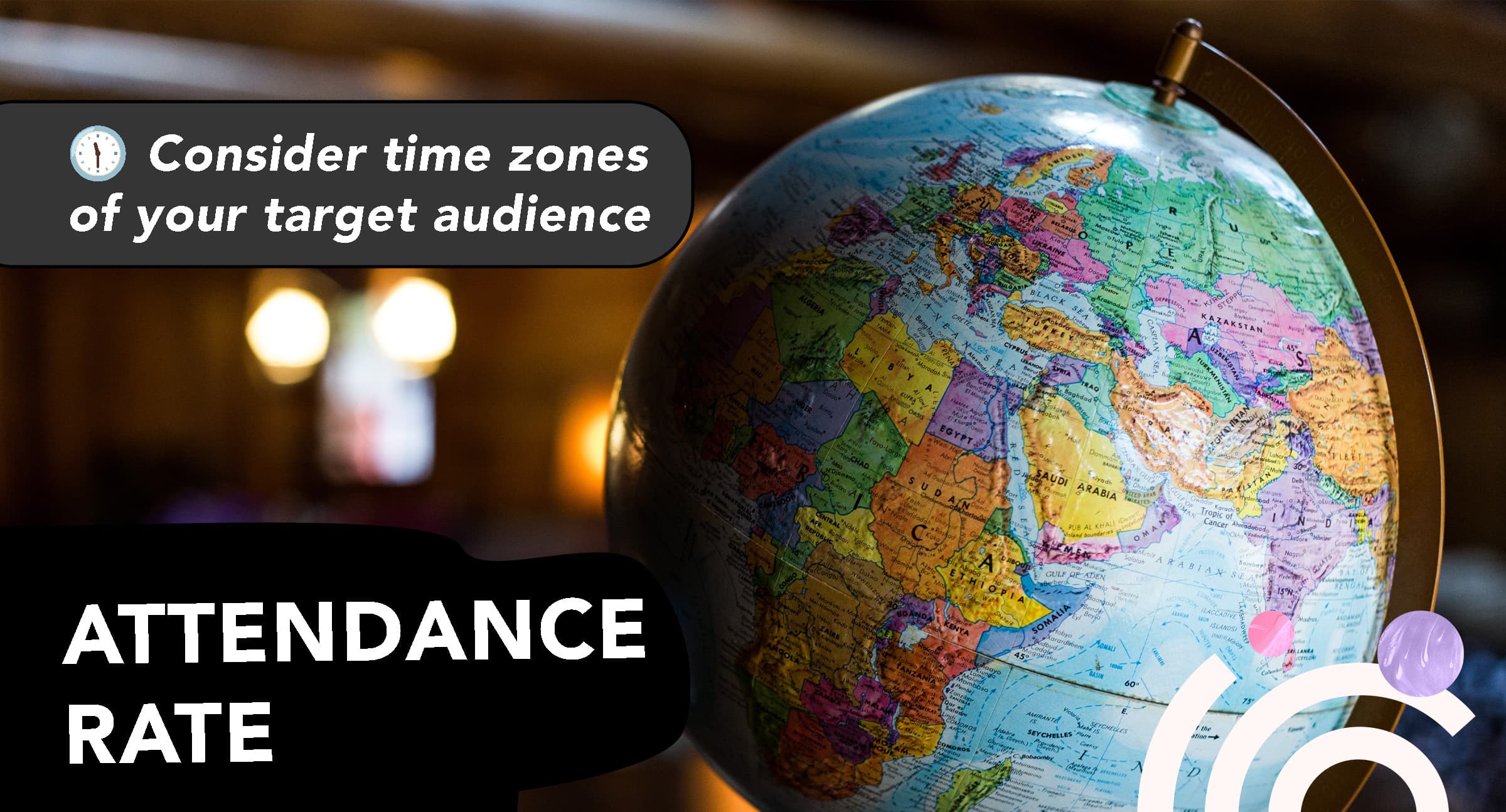
Time zones play an important role in webinar attendance. When planning a webinar, it's important to think about where your audience lives and what time it will be for them. If you can find a good time that works for most people, you'll have more people join your webinar.
By using data and information about your audience, you can schedule your webinar to include as many people as possible. This can lead to more people attending and a better experience for everyone. Check out the webinar scheduler to find a perfect time to host your webinar.
Get started todayJoin over 70,000 users and create unique webinars with Univid.Show me a demo
